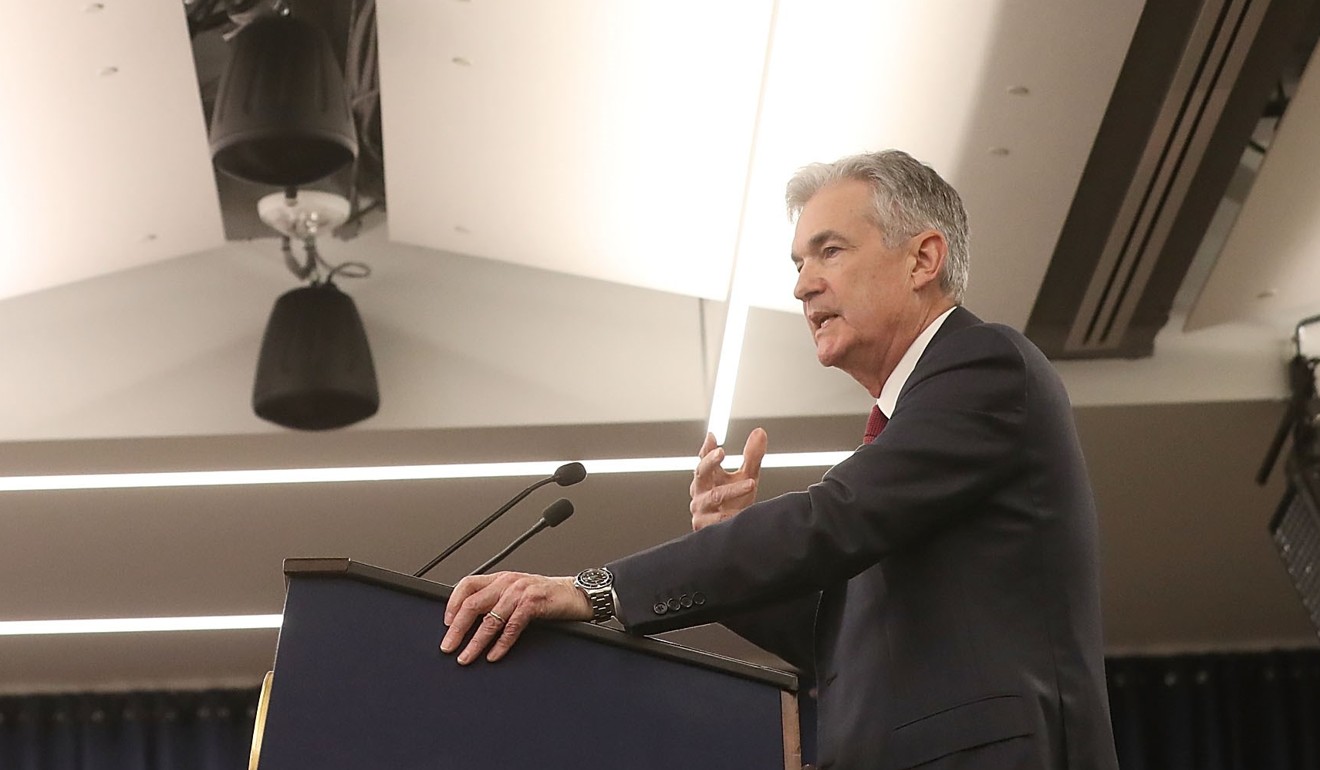
US Fed raises rates by 25 basis points, defying Donald Trump and a sagging stock market
- Raising rates to a range of 2.25 per cent to 2.5 per cent, the Fed nevertheless signalled fewer increases in 2019
- Fed Chairman Jerome Powell had faced intense pressure from US President Donald Trump not to raise rates
The US Federal Reserve raised borrowing costs for the fourth time this year, looking through a stock-market sell-off and defying pressure from US President Donald Trump, while dialling back projections for interest rates and economic growth in 2019.
By trimming the number of rate hikes they foresee in 2019 from three to two, policymakers signalled they may soon pause their monetary tightening campaign. Officials had a median projection of one move in 2020.

Following the decision, stocks erased gains and 10-year Treasury yields fell while the dollar bounced off its lows of the day. Investors may have been swayed by the Fed’s generally upbeat analysis and expectation of more rate increases than markets anticipate.
Chairman Jerome Powell and his colleagues said “economic activity has been rising at a strong rate” in a statement Wednesday following a two-day meeting in Washington. While officials said risks to their outlook “are roughly balanced”, they flagged threats from a softening world economy.
China’s growth outlook plays big part in direction of US rates
The Federal Open Market Committee “will continue to monitor global economic and financial developments and assess their implications for the economic outlook”, the statement said. The unanimous 10-0 decision lifted the federal funds rate target to a range of 2.25 per cent to 2.5 per cent.
In a press conference, Powell cited both positives for the economy such as a strong labour market and wage gains, while pointing to some developments that suggests growth is softening. He said relatively benign inflation gives the Fed room to be patient in setting policy.
The quarter-point hike came after Trump assailed the Fed on Twitter for two straight days, urging it to hold rates steady in the most public assault on its political independence in decades. Investors are also fretting over the economy, with the S&P 500 Index falling significantly in recent weeks.

Answering questions from the media, Powell said political considerations play no role in Fed policymaking. “We’re going to do our jobs the way we’ve always done them,” he said when asked about White House pressure. The Fed will do its analysis and “nothing will cause us to deviate from that”, he added.
Officials also altered key language in their statement, saying the FOMC “judges that some further gradual increases” in rates is likely to be needed, a shift from previous language saying the FOMC “expects that further gradual increases” would be required.
In addition, the median estimate among policymakers for the so-called neutral rate in the long run fell to 2.75 per cent, from 3 per cent in the previous forecasts from September. The median projection is for the benchmark rate to end 2021 at 3.1 per cent, down from a prior estimate of 3.4 per cent.
As the US and the rest diverge, here’s what 2019 holds for investors
Those are more acknowledgements that rates are moving closer to the point where policymakers will at least take a break from the quarterly procession of hikes they pursued throughout 2018.
When taken together, the latest quarter-point move, language changes and shift in rate projections indicate continued confidence in the economy, yet also greater caution over how far and fast the Fed expects to move with future hikes. As Powell has said, the Fed is now feeling its way forward and will act in line with how the economy performs.
Investors have had a more pessimistic view than the Fed, foreseeing one increase at most in 2019, according to interest-rate futures prices.
In a related move, the Fed lifted the interest rate it pays on bank reserves deposited at the central bank by just 20 basis points, instead of the usual 25 basis points that would match the quarter-point increase for the fed funds target range. As with a similar move in June, the action was aimed at containing the effective fed funds rate inside the target range.

